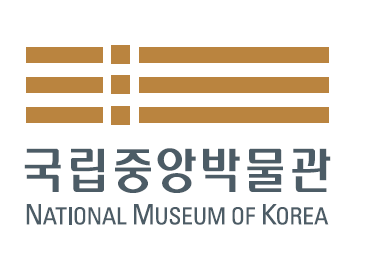Essay by Park Haehoon
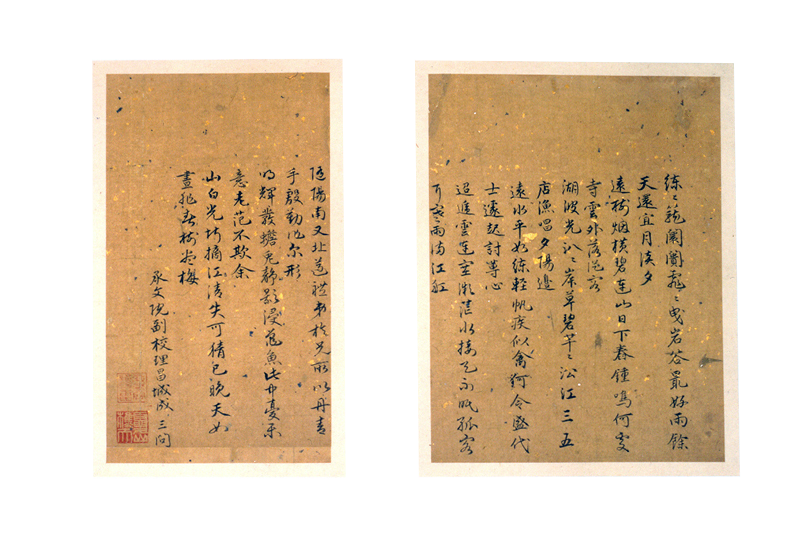
“Eight Poems: Quatrain with Five Characters in Each Line” from Album of Poems on “Eight Views of Xiao and Xiang Rivers,” Seong Sammun, 1442, ink on paper, first page (right): 30.4 × 22.8 cm, second page (left): 29.2 × 17.2 cm (The National Museum of Korea, Treasure 1405)
Album of Poems on “Eight Views of the Xiao and Xiang Rivers” (匪懈堂瀟湘八景詩帖) exemplifies the unity of the three arts—painting, poetry, and calligraphy—in the early Joseon period. The album was originally compiled as a handscroll by Prince Anpyeong in 1442, before it was later bound as an album. To create the original handscroll, Prince Anpyeong commissioned a painting of the “Eight Views of the Xiao and Xiang Rivers” (瀟湘八景圖) and nineteen poems on this theme by some of the finest writers of the era. The prince also personally calligraphed a number of famous poems on this theme, including “Poem on the Eight Views” (八景詩) by Emperor Ningzong of the Song Dynasty, along with works by Goryeo writers Yi Inro and Jin Hwa. Unfortunately, the painting and part of the poem by Emperor Ningzong are now missing, but the rest of the original works remain intact.
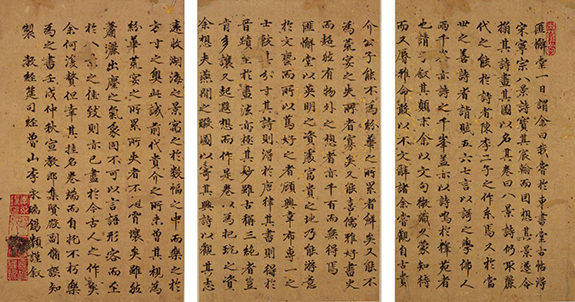
“Preface” from Album of Poems on “Eight Views of the Xiao and Xiang Rivers”, Yi Yeongseo, 1442, ink on paper, 31.6 × 18.8 – 21.9 cm (each) (The National Museum of Korea, Treasure 1405)
Aspiring for an ideal society
Prince Anpyeong’s creation of this album in 1442 recalls a project that took place in 1185, when Goryeo’s King Myeongjong ordered civil officials to compose poems on “Eight Views of the Xiao and Xiang Rivers,” before commissioning artist Yi Gwangpil to make a painting based on the poems. Prince Anpyeong likely knew about King Myeongjong’s earlier project to promote poetry and painting, and thus created his own album as the first such effort since the foundation of the Joseon Dynasty.
One of the nineteen writers who composed poems for this album was a monk named Manu; most of the others were important civil officials who supported the rule of King Sejong, prioritizing the cultivation of knowledge and ethics over military strength. For example, eleven of the poets were scholars of King Sejong’s Hall of Worthies:
- Jeong Inji (鄭麟趾, 1396–1478),
- An Ji (安止, 1377–1464),
- An Sungseon (安崇善, 1392–1452),
- Yi Boheum (李甫欽, d. 1457),
- Nam Sumun (南秀文, 1408–43),
- Shin Seokjo (辛碩祖, 1407–59),
- Yu Uison (柳義孫, 1398–1450),
- Choe Hang (崔恒, 1409–74),
- Bak Paengnyeon (朴彭年, 1417–56),
- Seong Sammun (成三問, 1418–56), and
- Shin Sukju (申叔舟, 1417–75).
Although the painting has not survived, it was likely produced by An Gyeon (安堅, active in the fifteenth century), the most renowned painter of the time.
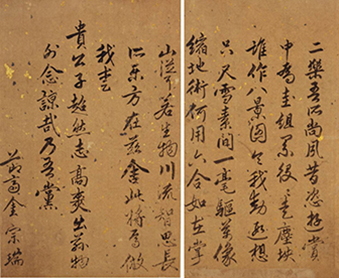
“Five-character Poem” from Album of Poems on “Eight Views of the Xiao and Xiang Rivers,” Kim Jongseo, 1442, Ink on paper, first page (right): 31.4 × 17.6 cm, second page (left): 32.6 × 20.4 cm (The National Museum of Korea, Treasure 1405)
In accordance with King Sejong’s reverence for knowledge and virtue, this album was produced through the enthusiastic guidance of Prince Anpyeong and the active participation of scholars from the Hall of Worthies. As a result, the album is now seen as one of the quintessential examples of the unity of the three arts of painting, poetry, and calligraphy. This magnificent achievement, with poems from nineteen contemporaneous writers, was repeated five years later with the production of Dream Journey to the Peach Blossom Land (shown below), which featured the brilliant eponymous painting by An Gyeon and poems by twenty-two writers. A total of nine writers contributed poems to both collections.
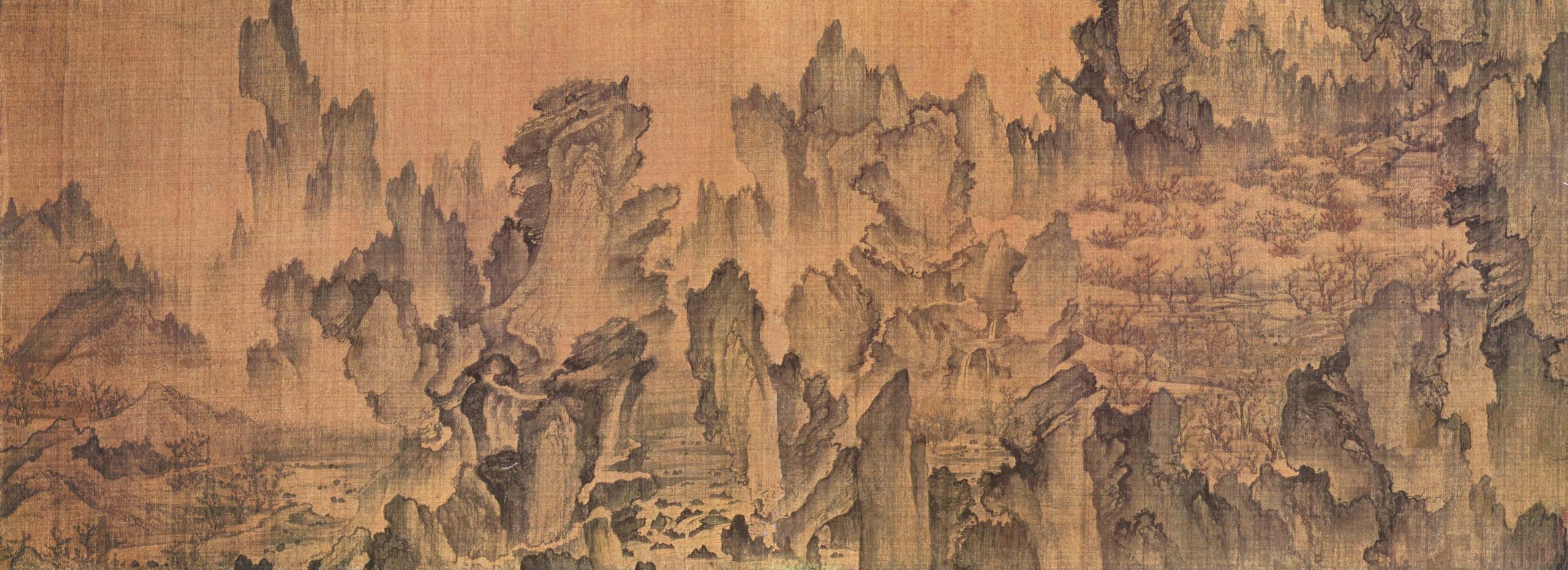
An Gyeon, Dream Journey to Peach Blossom Land (夢遊桃源圖), 1447, light color on silk, 106.5 x 38.7 cm (Tenri University Central Library, Japan)
While An Gyeon’s Dream Journey to the Peach Blossom Land has survived as the finest example of painting from the early Joseon period, his painting of the “Eight Views of the Xiao and Xiang Rivers” is no longer extant. However, it is estimated that the painting was very influential at the time, informing and inspiring many other paintings of the “Eight Views of the Xiao and Xiang Rivers” in the early Joseon period. This popular theme, which refers to eight scenic vistas near the intersection of the Xiao and Xiang Rivers in what is now Hunan Province in China, once symbolized a utopia of pristine peace and beauty.
Hence, the production of this album demonstrates Prince Anpyeong’s sincere longing for an ideal world, the same desire that inspired him to visualize the Peach Blossom Land five years later in Dream Journey to the Peach Blossom Land. The prince once had a vivid dream about the Peach Blossom Land that he could never forget, such that he built his vacation home on the northwest foot of Mt. Bugak and named it “Mugye Jeongsa” (武溪精舍), meaning “an abode by the stream of the Peach Blossom Land.” It is also said that he planted hundreds of peach trees around the house. Such details illuminate Prince Anpyeong’s desperate yearning to enact the ideal land in reality, a quest that turned out to be short-lived.
Tragic fate
Born as Yi Yong in 1418, becoming the third prince of King Sejong, Prince Anpyeong distinguished himself by displaying the most natural artistic talent of anyone in the Joseon royal court. Thus, he received the courtesy name Jeongji (淸之) and the pennames Bihaedang (匪懈堂), Nanggan Geosa (琅玕居士), and Maejukheon (梅竹軒). In particular, his father King Sejong conferred the penname Bihaedang—a term from the Book of Songs that roughly means “dissolving complacency”—as a rejoinder to the prince’s royal name “Anpyeong” (安平), which means “comfort and safety.”
From childhood, Prince Anpyeong loved to study and practice the arts, quickly establishing himself as a renowned painter, poet, and calligrapher. He was especially revered among the people for his wisdom and open-mindedness. In addition to Mugye Jeongsa, he also built Damdamjeong in Namho. He freely indulged his love of literature by compiling an impressive book collection and hosting poetry events featuring the most esteemed writers and scholars.
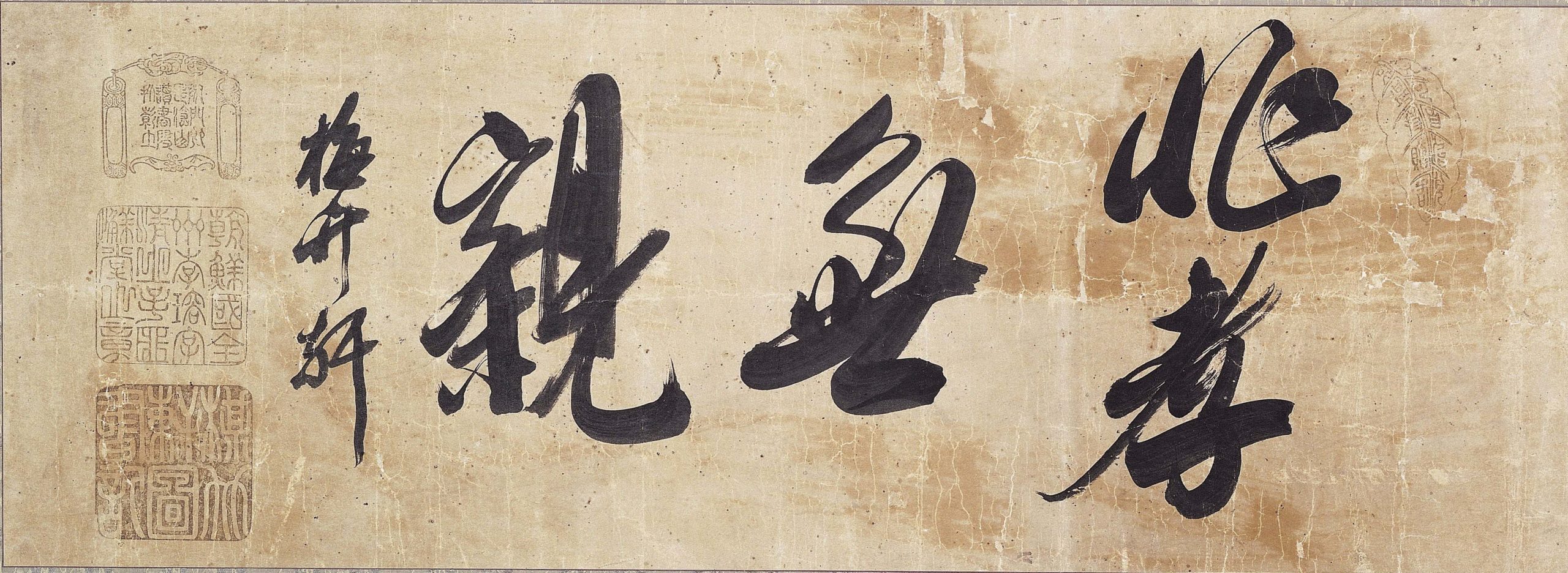
Prince Anpyeong, Calligraphy of Anpyeong-daegun, 15th century, Joseon period, ink on paper, 93 x 35 cm (Seokdang Museum of Dong-A University)
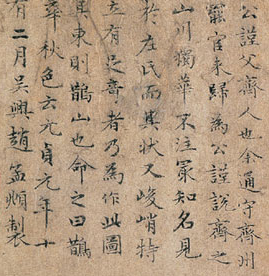
Zhao Mengfu, Autumn Colors on the Que and Hua Mountains, detail, 1295, ink and colors on paper, 28.4 x 93.2 cm (National Palace Museum, Taipei)
Prince Anpyeong was also renowned as the best calligrapher of his time, developing a characteristic style based on the calligraphy of China’s Zhao Mengfu. Although Zhao Mengfu’s calligraphy had been known in Korea since the late Goryeo period, its popularity soared through the influence of Prince Anpyeong, who used it to cultivate his own unique style combining elegance and vivacity. While he was naturally talented in the arts, the prince became successful thanks in large part to his persistence and work ethic. Growing up in the royal court, he was able to see many superb calligraphy works, helping him to refine his own tastes and inspiring him to collect calligraphy and paintings on his own.
According to “On Painting” (畵記) from Collected Works of Shin Sukju (保閑齋集) by Shin Sukju, Prince Anpyeong had a total of 222 works of calligraphy and painting in his collection. The majority of these works were by famous Chinese calligraphers and painters, along with some by An Gyeon. By cultivating this collection and sharing it with Joseon scholars and writers, Prince Anpyeong significantly contributed to the development of Joseon calligraphy and painting at the time.
In 1453, however, when Prince Anpyeong was thirty-six years old, his peaceful and self-sufficient life—befitting his name—came to a tragic end. That year, the prince’s elder brother Prince Suyang led a successful coup and ascended to the throne as King Sejo. Deemed a political threat to his brother, Prince Anpyeong was exiled to Ganghwa Island, before being executed by poison. The same fate was shared by Kim Jongseo, Seong Sammun, and Bak Paengnyeon, all of whom had written poems for this album and Dream Journey to the Peach Blossom Land.
Caught up in a political whirlwind, these scholars had their bright lives extinguished in an instant. However, their dream of an ideal society, which they visualized as the “Eight Views of the Xiao and Xiang Rivers” and the “Peach Blossom Land,” continues to live on in this album. Such sentiments continue to carry a powerful effect, touching the heart of viewers to this day.
Additional resources
Read the essay and learn more on The National Museum of Korea’s website.

